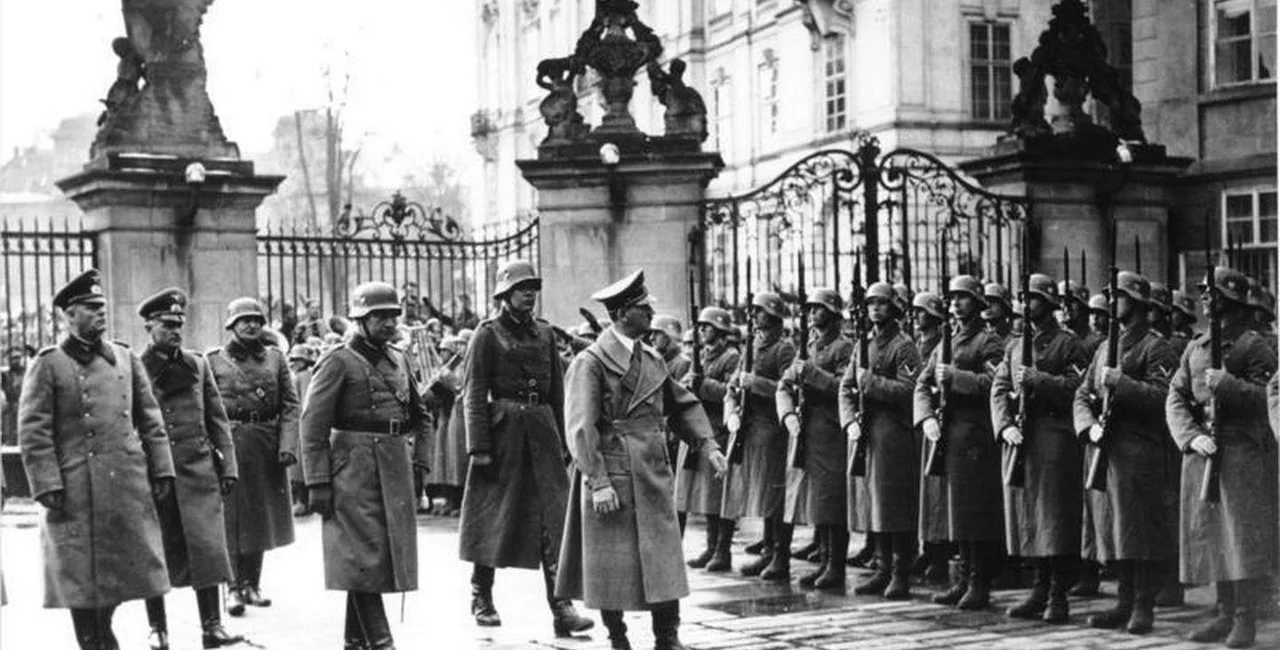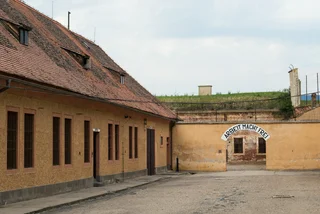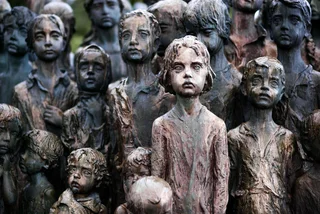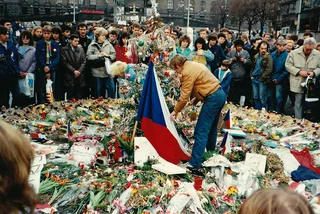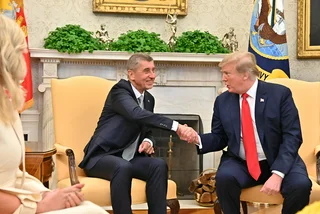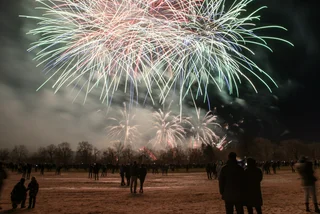The German occupation of what is now the Czech Republic began 82 years ago on March 15, 1939, one day after a German-backed puppet state was established in a newly independent Slovakia.
The move came barely five months after the Munich Agreement, signed Sept. 30, 1938. The agreement called for Czechoslovakia to give up control of its border regions known as the Sudetenland, where 3 million ethnic Germans lived. It was meant to keep German dictator Adolf Hitler from making further territorial demands. Representatives of Czechoslovakia were not part of the negotiations, and widely saw it as a betrayal of a small nation by larger powers – Britain, France, and Italy – to protect their own interests.
The agreement led to Czechoslovak President Edvard Beneš resigning on Oct. 5, 1938, to set up a government in exile in London. Conservative lawyer Emil Hácha on Nov. 30, 1938, became president of the short-lived Second Czechoslovak Republic. During that time, several concessions were made to further appease Germany: the Communist Party was banned, Jewish teachers in German educational institutes were suspended, and a law was passed to allow the state to take over Jewish companies.
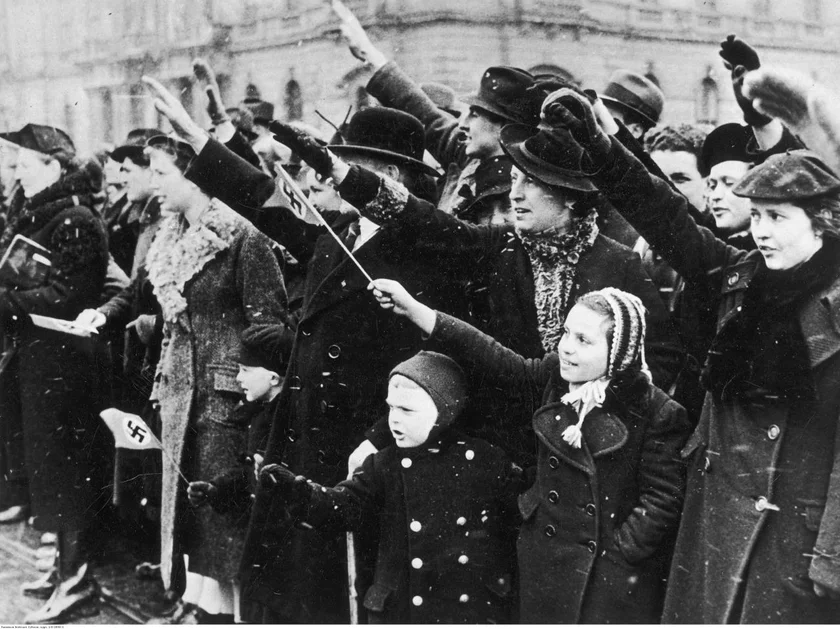
As soon as Slovakia declared its independence on March 14, Hácha went to Berlin to meet with Hitler in an effort to preserve independence for Bohemia and Moravia. He first met with German Foreign Minister Joachim von Ribbentrop, who warned him that he had little choice but to place what was left of Czechoslovakia in German hands.
Ultimatum in Berlin
Hitler watched movies while he kept Hácha waiting. Finally at 1:30 a.m. on the morning of March 15, Hácha was informed by Hitler that an invasion was already inevitable. Hitler threatened to have Prague bombed if German troops met with any resistance. If there as no resistance, then the troops would enter in a “tolerable manner,” and Bohemia and Moravia would have autonomy and some level of national freedom. The autonomy, though, did not materialize after the invasion.
Ribbentrop and Reichstag President Hermann Göring were present at the meeting, and repeatedly tried to force Hácha to sign an agreement for German troops to enter Bohemia and Moravia. The nominal reason for the troops was that they were needed to stop the allegedly rising ethnic tension.
PARTNER ARTICLE
This demand reportedly caused Hácha to go into medical distress, and he was revived by injections from Hitler’s doctor. Hácha at around 4 a.m. agreed to the German occupation, after being told that hundreds of bombers would take off at 6 a.m. and level Prague if he didn’t concede.
Hácha stayed on as president of what became known as the Protectorate of Bohemia and Moravia, but had to swear allegiance to Hitler and accept greatly weakened powers, which diminished more over time. By 1941 he was just a figurehead.
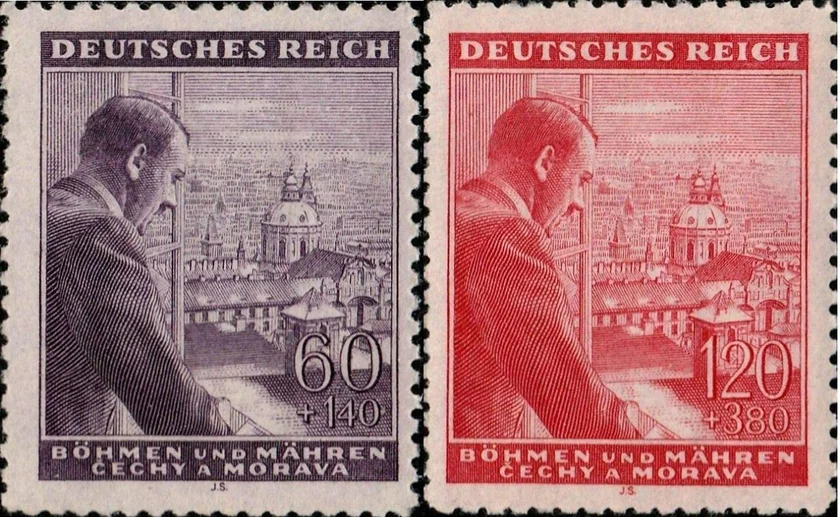
Hitler in Prague Castle
German troops crossed into Bohemia on March 15, and Hitler arrived in Prague Castle in the evening. The next day, he declared the new Protectorate of Bohemia and Moravia, which lasted until May 8, 1945, when Germany surrendered, ending World War II. An image of Hitler looking down from Prague Castle onto Malá Strana was featured on postage stamps issued in 1943 to mark his 54th birthday.
While the Munich Agreement gave Germany control over the two-thirds of Czechoslovakia’s coal, iron, steel, and electricity resources, it wasn’t until the occupation that Germany was able to get control over Bohemia’s heavy industry as well, which was crucial for Hitler’s plans for further expansion. In 1940, approximately one-quarter of Germany’s armaments were made in the Protectorate.
The narrator of a British Movietone newsreel says that the invasion, following after months of apparent improvement, “shocked the world.” But it did not spur any action. The narrator simply mentions questions that British Prime Minister Neville Chamberlain asked of Hitler in a speech. Chamberlain had earlier hailed the Munich Agreement as guaranteeing peace. Action would not come until Sept. 3, 1939, when France and Britain declared war following Germany’s invasion of Poland two days earlier.
Long roots to the Velvet Revolution
A student protest against the occupation took place Oct. 28, 1939, the anniversary of Czechoslovak independence in 1918. During the protest, medical student Jan Opletal was shot by police. He died Nov. 11, and his funeral was on Nov.15. The protests following his funeral led to Czech universities being closed as of Nov. 17, 1939. Mass arrests of students took place, with nine executions and many more dying in concentration camps. Protests in 1989 on the 50th anniversary of the student arrests became the basis of the Velvet Revolution.
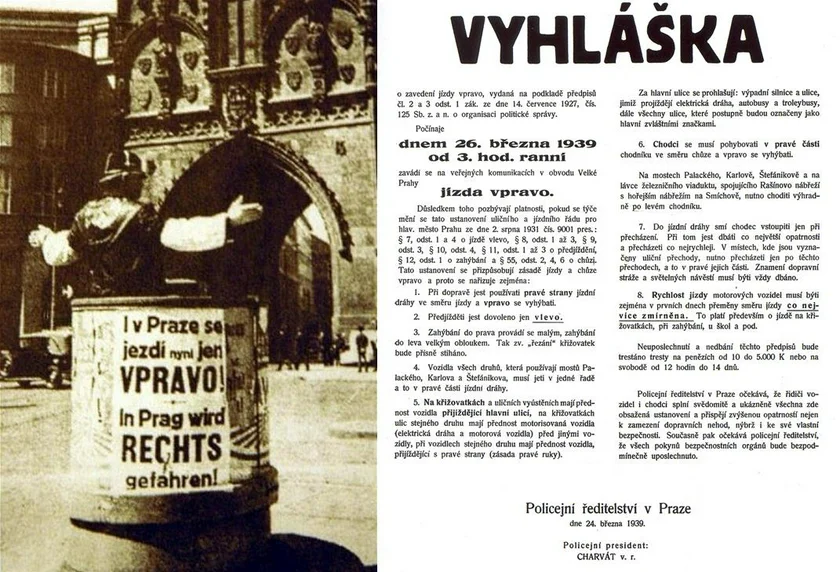
One lasting change
The occupation brought one change that is still in use. Before the occupation, people drove on the left side of the road. Czechoslovakia had agreed to eventually switch in 1925, and in 1931 said they would do so in five years, but did not do so. The change to driving on the right took place starting on March 15 in Ostrava, with Prague joining on March 26. It took trams a bit longer to be adapted.
Signs and announcements took place for weeks to remind people. The switch apparently went fairly smoothly, with just one traffic fatality attributed to it. The change also has a practical effect for historians. One way to date photos from being before or after 1938 is to check which side the traffic is on.
The Wiener Holocaust Library has put together a comprehensive exhibit with English-language visuals and videos devoted to this period of history at www.theholocaustexplained.org.












 Reading time: 4 minutes
Reading time: 4 minutes 